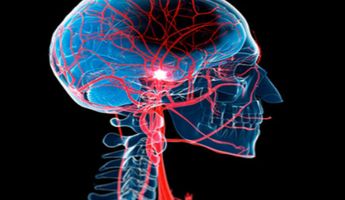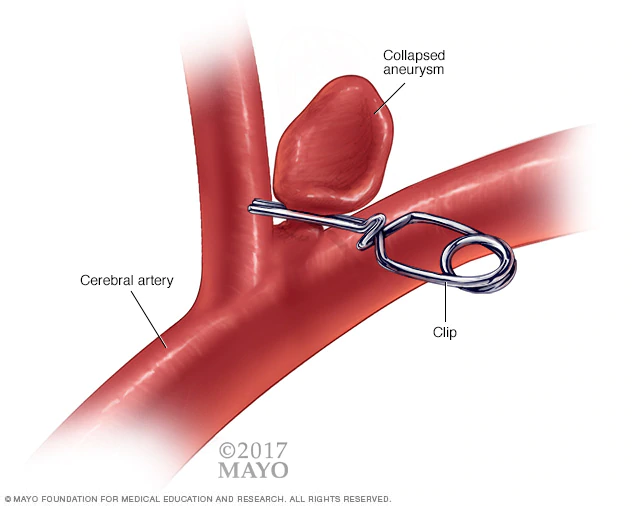Brain Aneurysm Repair in Cyprus
Search and Compare the Best Clinics and Doctors at the Lowest Prices for Brain Aneurysm Repair in Cyprus

Find the best clinics for Brain Aneurysm Repair in Cyprus
No clinics available
Morocco offers the best prices Worldwide
Price: $ 2,268

- Home
- Cyprus
WHY US?
At Medijump, we're making medical easy. You can search, compare, discuss, and book your medical all in one place. We open the door to the best medical providers worldwide, saving you time and energy along the way, and it's all for FREE, no hidden fees, and no price markups guaranteed. So what are you waiting for?

Free

Best Price

Widest Selection

Risk-Free
What you need to know about Brain Aneurysm Repair in Cyprus

Brain Aneurysm Repair in Cyprus involves a surgical procedure designed to prevent the rupture of an aneurysm in the brain. This medical intervention is critical in mitigating devastating consequences such as stroke, brain damage, or death. It is performed by specialized neurosurgeons using methods such as clipping or coiling.
Familiarizing oneself with the procedure, risks, benefits, and potential complications is necessary for making an informed decision. Before undergoing Brain Aneurysm Repair in Cyprus, you should have a comprehensive understanding of your condition, the requisite tests, and your choices.
What is the cost of Brain Aneurysm Repair in Cyprus?
The cost of Brain Aneurysm Repair in Cyprus will vary depending on several factors. Primarily, the complexity of your case, the type of surgical procedure required (clipping or coiling), the length of your post-operative hospital stay, and your health insurer's policy structure. It is important to consult your healthcare provider or insurance company for a more precise estimate.
Nevertheless, it is crucial to consider that the cost should not be the only determinant in your decision-making process; the quality and credence of healthcare, the expertise of the surgeon, and hospital infrastructure should also be factored in. Ideally, affordability should not compromise the quality of care.
What does a Brain Aneurysm Repair Procedure Involve?
Critically, the Brain Aneurysm Repair Procedure is a high-precision, life-saving surgical intervention done under general anaesthesia. It chiefly involves two techniques: Clipping, which entails a small metal clip placed around the base of the aneurysm to prevent rupture, and Coiling, which involves filling the aneurysm with small platinum coils to instigate clotting and thereby preventing rupture.
It's paramount to understand that both techniques have their own set of advantages and disadvantages and the choice of method heavily depends on the location and size of the aneurysm, the patient's overall health, and the surgeon's expertise and judgment.
How Long Should I Stay in Cyprus for a Brain Aneurysm Repair Procedure?
The initial hospital stay typically ranges from 3 to 7 days depending on the complexity of the procedure and your recovery rate. However, you're generally recommended to stay in Cyprus for approximately 2 to 3 weeks after discharge. This allows for follow-up visits with your treating physician, and any necessary immediate post-operative care.
The time duration may vary according to the patient's overall well-being, the specifics of their condition, and the complexity of the medical procedure. Allow yourself the needed time to ensure the best possible outcome after your stay in Cyprus for a Brain Aneurysm Repair procedure.
What’s the Recovery Time for Brain Aneurysm Repair Procedures in Cyprus?
The recovery trajectory following Brain Aneurysm Repair in Cyprus widely depends on the complexity of the procedure, the patient’s health status, and whether the aneurysm has ruptured or not. Generally, patients who undergo unruptured aneurysm repair sidelining with a minimum neurological deficit can anticipate recovery within 3 to 6 weeks.
In instances where an aneurysm rupture has occurred, recovery can be more prolonged, extending to several months or even a year, considering the possible brain damage. However, a well-rounded recovery plan that comprises physical therapy, occupational therapy, and psychologically supportive measures can significantly aid in a patient’s recovery.
What's the Success Rate of Brain Aneurysm Repair Procedures in Cyprus?
Brain Aneurysm Repair in Cyprus boasts a high success rate with approximately 70-80% of unruptured brain aneurysms successfully treated without significant complications. The success rates for treating ruptured aneurysms are slightly lower due to associated complications.
However, advancements in surgical techniques have led to a significant reduction in procedural risks and increased long-term survival rates. Actualizing this commendable success rate, it becomes apparent that Brain Aneurysm Repair procedures in Cyprus are steadily growing safer and more efficient.
Are there Alternatives to Brain Aneurysm Repair Procedures in Cyprus?
There exist alternatives to Brain Aneurysm Repair procedures in your area, however, the suitability of these alternatives majorly hinges on the size, location, and overall health of the patient. A brain aneurysm can indeed be an alarming diagnosis. Conservative management, for instance, is a viable alternative that involves regular monitoring instead of invasive surgery.
This approach can be the chosen course for small, asymptomatic aneurysms, particularly in patients with higher surgical risks. If chosen, this path requires rigorous follow-ups and stringent lifestyle adjustments to keep blood pressure in check and minimize the risk of rupture. On the other hand, techniques such as endovascular coiling and surgical clipping could serve as alternatives to traditional aneurysm repair procedures, depending on your specific condition.
What Should You Expect Before and After the Procedure?
Before the procedure, expect pre-operative tests such as MRI scans or CT angiograms. You will also discuss the procedure, risks, benefits, and alternatives with your neurosurgeon. After the Brain Aneurysm Repair procedure, you can expect to stay in an intensive care unit for close monitoring.
Gradually, as your condition stabilizes, you will move to the regular ward and thereafter, be discharged home or to a rehabilitation facility. You should also expect follow-up appointments and rehabilitation, for optimum recovery.
How safe is the Brain Aneurysm Repair Procedure in Cyprus?
Brain Aneurysm Repair procedure in Cyprus is generally safe, thanks to cutting-edge medical technology, highly skilled surgeons, and state-of-the-art healthcare facilities available. However, like any other major surgical procedure, it does pose potential risks including infection, bleeding, and neurological complications, among others.
Mortality rates, though minimal, exist as per global medical statistics. Yet, it is vital to understand that the risks of not treating a significant brain aneurysm often outweigh the risks of the repair procedure.
What sort of Aftercare is Required for Brain Aneurysm Repair Procedures in Cyprus?
The aftercare following a Brain Aneurysm Repair Procedure in Cyprus involves regular follow-ups with your neurosurgeon, abiding by the prescribed medication regimen, getting periodic imaging tests, and adopting a healthy lifestyle.
Participation in rehabilitation programs (which include physical, occupational, and speech therapy) is often necessary to expedite recovery and regain maximum function. While the aftercare process may appear daunting, it acts as a cornerstone for a successful recovery.
How can I prepare for a Brain Aneurysm Repair Procedure in Cyprus?
Preparation for a Brain Aneurysm Repair starts with a thorough discussion with your neurosurgeon about your medical history, current medications, and possible risks and benefits of the procedure. Pre-operative tests, including imaging, blood tests, and cardiac evaluations, are typically required. You might be asked to refrain from eating or drinking before the surgery.
Post-procedural preparation involves arranging for someone to drive you home after discharge, taking time off work, and ensuring you have a support system in place to help you during the initial recovery phase.
How is the long-term prognosis after Brain Aneurysm Repair Procedure in Cyprus?
The long-term prognosis after a Brain Aneurysm Repair Procedure in Cyprus primarily depends on factors like the type and location of the aneurysm, the patient's age, overall health condition, and whether the aneurysm rupture occurred or not.
Most patients lead a normal life after the procedure. Recurrence of aneurysms is rare but may occur in some cases, reinforcing the importance of regular follow-up care. Every life saved from a brain aneurysm is essentially a masterpiece of medical sciences, and each patient’s recovery story is emboldened by the unique scars they bear.
Whilst the information presented here has been accurately sourced and verified by a medical professional for its accuracy, it is still advised to consult with your doctor before pursuing a medical treatment at one of the listed medical providers
No Time?
Tell us what you're looking for and we'll reachout to the top clinics all at once
Enquire Now

Popular Procedures in Cyprus
Prices Start From $1,589

Prices Start From $1,439

Prices Start From $786

Recommended Medical Centers in Cyprus for procedures similar to Brain Aneurysm Repair

- Interpreter services
- Translation service
- Religious facilities
- Medical records transfer
- Medical travel insurance
- Health insurance coordination
- TV in the room
- Safe in the room
- Phone in the room
- Private rooms for patients available

- Interpreter services
- Translation service
- Religious facilities
- Medical records transfer
- Medical travel insurance
- Health insurance coordination
- TV in the room
- Safe in the room
- Phone in the room
- Private rooms for patients available

- Interpreter services
- Translation service
- Religious facilities
- Medical records transfer
- Medical travel insurance
- Health insurance coordination
- TV in the room
- Safe in the room
- Phone in the room
- Private rooms for patients available

- Interpreter services
- Translation service
- Religious facilities
- Medical records transfer
- Medical travel insurance
- Health insurance coordination
- TV in the room
- Safe in the room
- Phone in the room
- Private rooms for patients available

- Interpreter services
- Translation service
- Religious facilities
- Medical records transfer
- Medical travel insurance
- Health insurance coordination
- TV in the room
- Safe in the room
- Phone in the room
- Private rooms for patients available

- Interpreter services
- Translation service
- Religious facilities
- Medical records transfer
- Medical travel insurance
- Health insurance coordination
- TV in the room
- Safe in the room
- Phone in the room
- Private rooms for patients available

- Interpreter services
- Translation service
- Religious facilities
- Medical records transfer
- Medical travel insurance
- Health insurance coordination
- TV in the room
- Safe in the room
- Phone in the room
- Private rooms for patients available

- Interpreter services
- Translation service
- Religious facilities
- Medical records transfer
- Medical travel insurance
- Health insurance coordination
- TV in the room
- Safe in the room
- Phone in the room
- Private rooms for patients available

- Interpreter services
- Translation service
- Religious facilities
- Medical records transfer
- Medical travel insurance
- Health insurance coordination
- TV in the room
- Safe in the room
- Phone in the room
- Private rooms for patients available

- Interpreter services
- Translation service
- Religious facilities
- Medical records transfer
- Medical travel insurance
- Health insurance coordination
- TV in the room
- Safe in the room
- Phone in the room
- Private rooms for patients available
Brain Aneurysm Repair in and around Cyprus
Cyprus is an island country in the Mediterranean Sea. The country is famous for its mineral wealth, splendid wines, dazzling beaches, and compelling culture. In addition, Cyprus is filled with classical ruins and century-old monasteries, and as the legendary birthplace of Aphrodite, it is also steeped in mythology. Due to its huge array of modern private medical centers equipped with excellent service, cutting-edge technology, and skilled doctors, Cyprus is also a thriving medical tourism destination. Foreign patients from all around the globe come to this country for a vast range of medical treatments, particularly bariatric surgery, cardiology, cosmetic and plastic surgery, and fertility treatments. Its spa and well-being resorts are also welcoming an increasing number of international medical tourists.
Popular Parts of Cyprus
The majority of tourists start their trip to Cyprus in Larnaca, it is the oldest city in Cyprus. It has a vast array of historical monuments, including Ayios Lazaros (the Church of Saint Lazarus), Stavrovouni Monastery, and Larnaca Medieval Castle. Besides its ancient buildings, Mackenzie Beach and Larnaca Marina are also popular among tourists. Not too far from Larnaca is Paphos, a charming city with exquisite natural beauty and all sorts of ancient ruins. The most popular attractions in this city include the Tombs of the Kings, the Old Town, Early Christian Basilica-St Paul’s Pillar, and Paphos UNESCO Archaeological Park. Nicosia, Cyprus’ capital, is also a popular destination.
Weather and Climate in Cyprus
Cyprus experiences a Mediterranean climate with four seasons and over 300 days of sunshine a year. The summer is long, warm, and dry, lasting from mid-May to mid-October. The winter starts in December and ends in February, bringing mild temperatures and more rain showers. Autumn and spring are short, but there is good weather.
Getting around in Cyprus
The main international gateway to Cyprus is Larnaca International airport. It serves international flights to many cities around Europe and the Middle East, including Kyiv, Abu Dhabi, London, and Moscow. In the south, the intercity bus system is reliable and great, but in the north, the bus services are often unreliable and do not seem to follow a timetable. Taxis are a safe and relatively inexpensive option. In the south, there are three types of taxi services: urban, trans-urban or interurban (shared and can be booked), and rural. In the north, taxis are only available in the main towns. Inside towns, buses are the best way to get around for those looking for a more affordable option. Taxis are more expensive, but they do offer more flexibility.
Tourist Visas in Cyprus
Nationals of EU countries, the United States, Australia, Canada, Britain, Iceland, Japan, and several other countries do not need a visa to visit and stay in Cyprus for up to 90 days. Other countries not listed in the visa-free agreement need to apply for a visa before entering Cyprus. It is best to consult the Cypriot Ministry of Foreign Affairs or contact the embassy to learn more about visa requirements.
Additional Information
- Local Currency: The euro (€) has been the official currency of Cyprus since 1 January 2008. The exchange rate from €1 is approximately US$1.17.
- Money & Payments: It is easy to find reliable ATMs in large towns and tourist areas. Major credit cards, such as Visa and MasterCard, are widely accepted in larger restaurants, shops, and hotels. However, if you plan to go to smaller towns or villages, it is best to ensure you have cash. Tipping is expected most of the time. Tip at least 10% of the bill, and at least 5% or round up to the nearest euro for taxi drivers.
- Local Language: Around 80% of Cypriots speak Greek as their first language, while Turkish is spoken by 10% of the population. English is widely spoken, especially in tourist areas.
- Local Culture and Religion: The main religion of Cyprus is Greek Orthodox, but Islam is the most prominent religion in the north.
- Public holidays: Some of the most celebrated holidays in Cyprus include Ohi Day, Christmas Day, Boxing Day, New Year’s Day, Epiphany, Clean Monday, Cyprus National Day, and Independence Day.
Popular Searches
- Plastic Surgery in Thailand
- Dental Implants in Thailand
- Hair Transplant in Thailand
- Breast Augmentation Thailand
- Gastric Sleeve in Thailand
- Gender Reassignment Surgery in Thailand
- Laser Hair Removal in Bangkok
- Botox in Bangkok
- Dermatology in Bangkok
- Breast Augmentation in Bangkok
- Coolsculpting in Bangkok
- Veneers in Turkey
- Hair Transplant in Turkey
- Rhinoplasty in Turkey
- Stem Cell Therapy in Mexico
- Rhinoplasty in Mexico
- Liposuction in Mexico
- Coolsculpting in Tijuana
- Rhinoplasty in Korea
- Scar Removal in Korea
- Gastric Sleeve in Turkey
- Bone Marrow Transplant in India
- Invisalign in Malaysia
- Plastic Surgery in the Dominican Republic
- Tummy Tuck in the Dominican Republic
- Plastic and Cosmetic Surgery in Poland
- Rhinoplasty in Poland
- Hair Implant in Poland
- Dental Implants in Poland
- IVF in Turkey